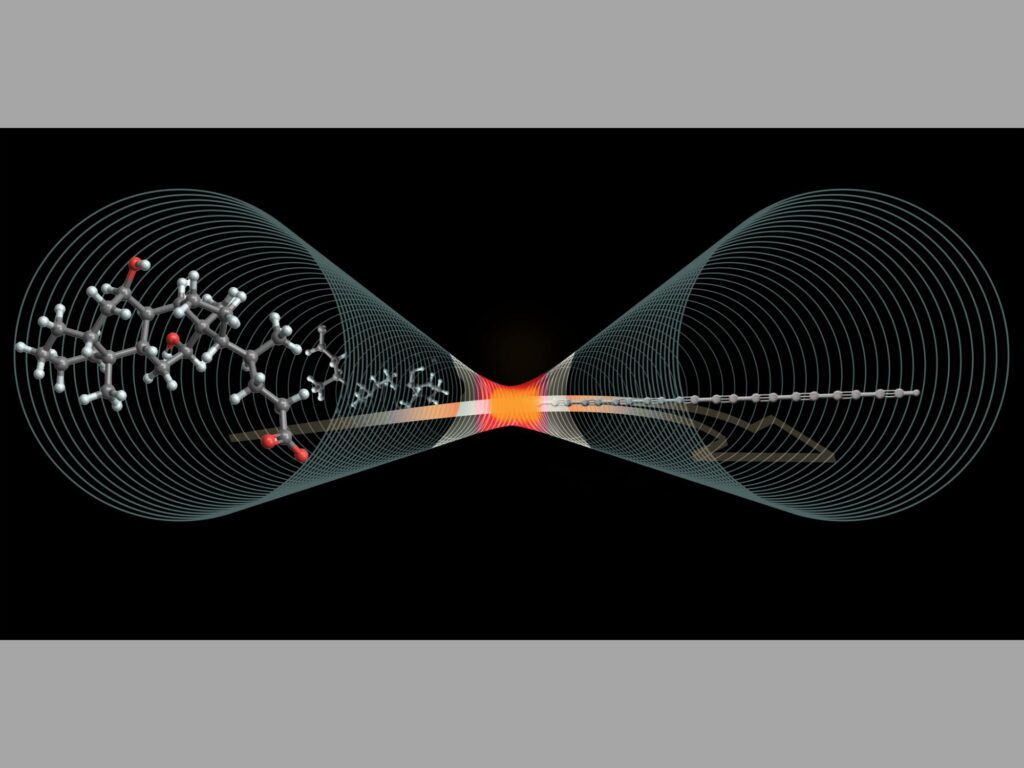Carbyne, a one-dimensional chain of carbon atoms, is incredibly strong for being so thin, making it an intriguing possibility for use in next-generation electronics, but its extreme instability causing it to bend and snap on itself made it nearly impossible to produce at all, let alone produce enough of it for advanced studies. Now, an international team of researchers, including from Penn State, may have a solution.
The research team has enclosed carbyne in single-walled carbon nanotubes—tiny, tube-shaped structures made entirely of carbon that are thousands of times thinner than a human hair. Doing this at low temperatures makes carbyne more stable and easier to produce, potentially leading to new advancements in materials science and technology, the researchers said.
They called the development “promising news,” as scientists have struggled for decades to create a stable form of carbyne in large enough quantities for deeper investigation.
“The history of carbyne’s discovery is like a detective story,” said Slava V. Rotkin, professor of engineering science and mechanics and co-author of the study published in ACS Nano. “It was predicted theoretically, but for many years, attempts to synthesize it were unsuccessful because the chains would either bend or form unintended bonds.”
This instability made it difficult to study and even harder to imagine using in real-world applications. However, like graphene, the atomically thin two-dimensional carbon material already applied in some electronics, carbyne’s extreme strength and electronic properties continued to entice researchers with its potential to revolutionize electronics, Rotkin said. The pull is even greater with carbyne, though, as it has a built-in advantage over graphene.
“Like graphene, carbyne can allow electrons to move very quickly,” Rotkin said. “However, carbyne also has something called a ‘semiconductor gap,’ which makes it useful for building transistors, the tiny switches that power electronics. Graphene, on the other hand, doesn’t have this gap, so it can’t be used in the same way.”
A semiconductor gap is a small energy gap that allows a material to act as a switch for electrical current. Graphene, in its pure form, cannot be a transistor itself because electrons can always flow through it since it doesn’t have this gap. Graphene can be engineered to have a gap through various additions and manipulations, but carbyne has the gap naturally. This means that in the future, carbyne-based electronics could more easily offer faster, more efficient performance compared to today’s silicon-based technology.
Along with potentially solving the instability issue, the researchers’ new synthesis approach could also solve another roadblock in the path to carbyne meeting its great potential. One of the biggest challenges in carbyne research has been producing it in significant quantities. In the past, only tiny amounts of carbyne could be made, often under extreme conditions such as high temperatures, intense pressures or in chemically reactive environments. These are factors that made it difficult for scientists to fully explore its properties. However, the new synthesis method changes that.
What makes this new method stand out is how much easier and more effective it is compared to older techniques, the researchers said. First, the team used a special precursor, which acts as gentle starting material, called ammonium cholate to grow carbyne at much lower temperatures.
Second, they used single-walled carbon nanotubes as a kind of protective shell around the carbyne, which works much better than the thicker, multi-layered tubes used in the past. This shell helps keep the fragile carbyne stable.
Finally, the new method produces a lot more carbyne than before, which means scientists can now study it in greater detail and explore how it might be used in real-world applications.
“Two major advancements of this technique are its low cost and high yield,” Rotkin said. “This opens the door for broader studies, both in fundamental science and moving toward real applications.”
By encapsulating carbyne inside carbon nanotubes, researchers have also found a way to preserve its unique properties. The nanotubes act as protective shells, preventing the carbyne from breaking down while still allowing scientists to study it in its nearly pure form.
“Importantly, single-wall nanotubes don’t disturb the carbyne chain much,” Rotkin noted. “There are only gentle van der Waals interactions—weak forces that allow the carbyne to stay in place without bonding to the nanotube walls.”
While real-world applications are still in the early stages, carbyne’s potential is vast, Rotkin said. Because it is a strongly correlated material, its properties extend beyond classical physics, meaning it could have applications in next-generation computing and nanotechnology.
“Materials like this have complex behaviors, both when they’re in their normal state and when they’re excited,” Rotkin said. “This means we’re dealing with quantum materials, which could lead to entirely new technologies.”
The research team also made an unexpected discovery during the study. They found that a common solvent—cholate, a salt of cholic acid that the human body uses to dissolve organic compounds—could transform into carbyne chains without additional complex steps.
“It was a complete surprise that a common solvent like cholate can transform into the carbyne chain without any further issue,” Rotkin said. “It showed how even familiar materials can take on new roles in advanced chemistry.”
Although many questions about carbyne remain unanswered, Rotkin said he believes this is a significant step forward. With a stable way to produce carbyne in larger quantities, researchers can now explore its potential more deeply.
“In the past, the amount of material available for study was barely enough for one or two groups to confirm its existence,” Rotkin said. “Now, we have the opportunity to truly understand its properties and applications.”


